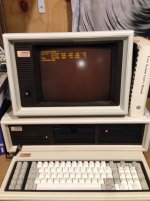resman
Veteran Member
It's probably just the one cli *nix looks like any otherNot at all dissimilar to any Dos variant prompts looking like another.
Didn't old SCO do all the hard work anyway?
It's more a dig at linux but this link does contain some interesting tidbits all the same;
http://www.softpanorama.org/People/...rosoft_shortlived_love_affair_with_unix.shtml
Not that the shell is that different, but the include programs give it a certain "flavor".
I thought this site had some interesting tidbits, too. This from inside the Microsoft Xenix group: http://seefigure1.com/2014/04/15/xenixtime.html
Certainly Microsoft had a lot to do with the tools used to build Xenix (at least after the CMERGE compiler). I think that all changed with SCO Unix.


